The total eclipse brought a few minutes of darkness for some. But if it’s just inky blackness you seek, here’s where to go
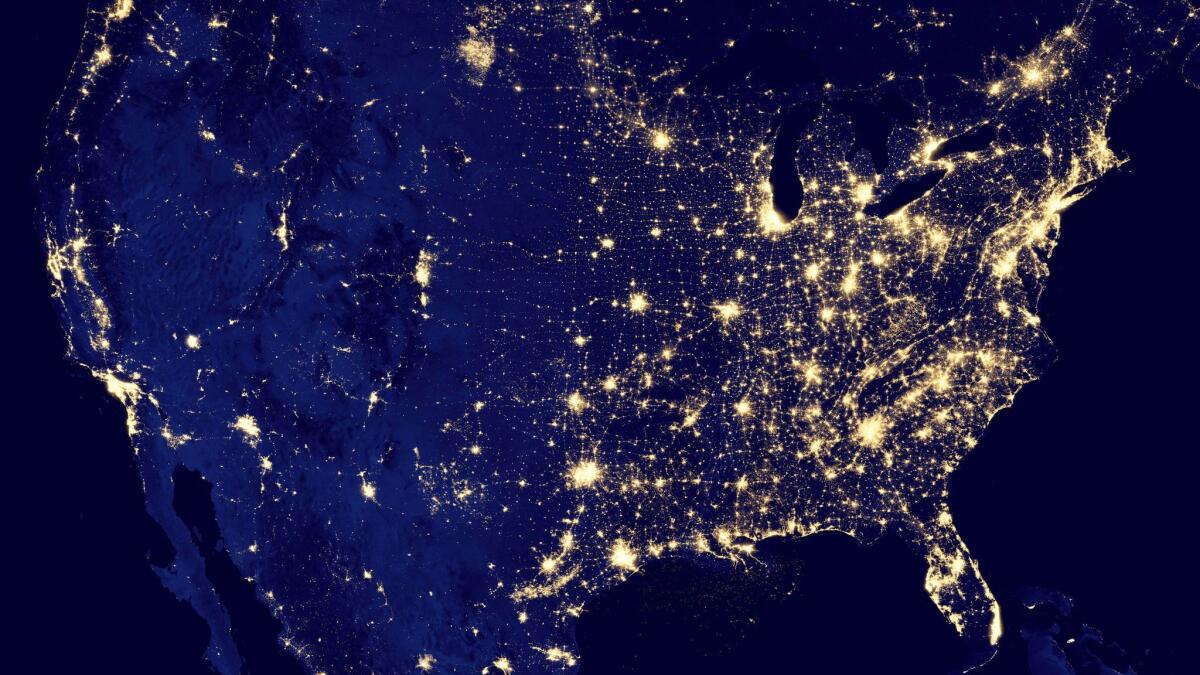
- Share via
When the moon blots out the sun during Monday's total solar eclipse, 12 states in its path of totality, from Oregon to South Carolina, will be plunged into darkness for a few minutes.
The eclipse will begin over the Pacific Ocean at 8:45 a.m. Pacific time and start to darken the sky at the first U.S. point in Salem, Ore., at 9:05 a.m. Other parts of the country, including Southern California, will experience a partial eclipse, a diminished darkening of the sky.
The brief event may be the closest connection most of us will have to the dark sky our ancestors saw when they looked up — and that's no easy trick these days. Earth has become so bright from the artificial glow of our own making that 80% of Americans can no longer see the Milky Way’s starry band, according to scientists who study light pollution.
Why does that matter? It turns out that humans need the dark of night as much as they need sunlight. It keeps our biological clocks in order and sleep-inducing melatonin flowing.
Another reason humans should seek the dark: "We lose perspective of who we are," said Amanda Gormley, spokeswoman for the International Dark Sky Assn., which works to identify and protect the darkest places on the planet. "Looking into the night sky has the effect of making us feel small in a really beautiful way, not in a negative way, and helps us think about our place in the world."
Here are six destinations, above or below the Earth’s surface, to consider if you want to venture to the dark side.
Great Basin National Park, Nevada
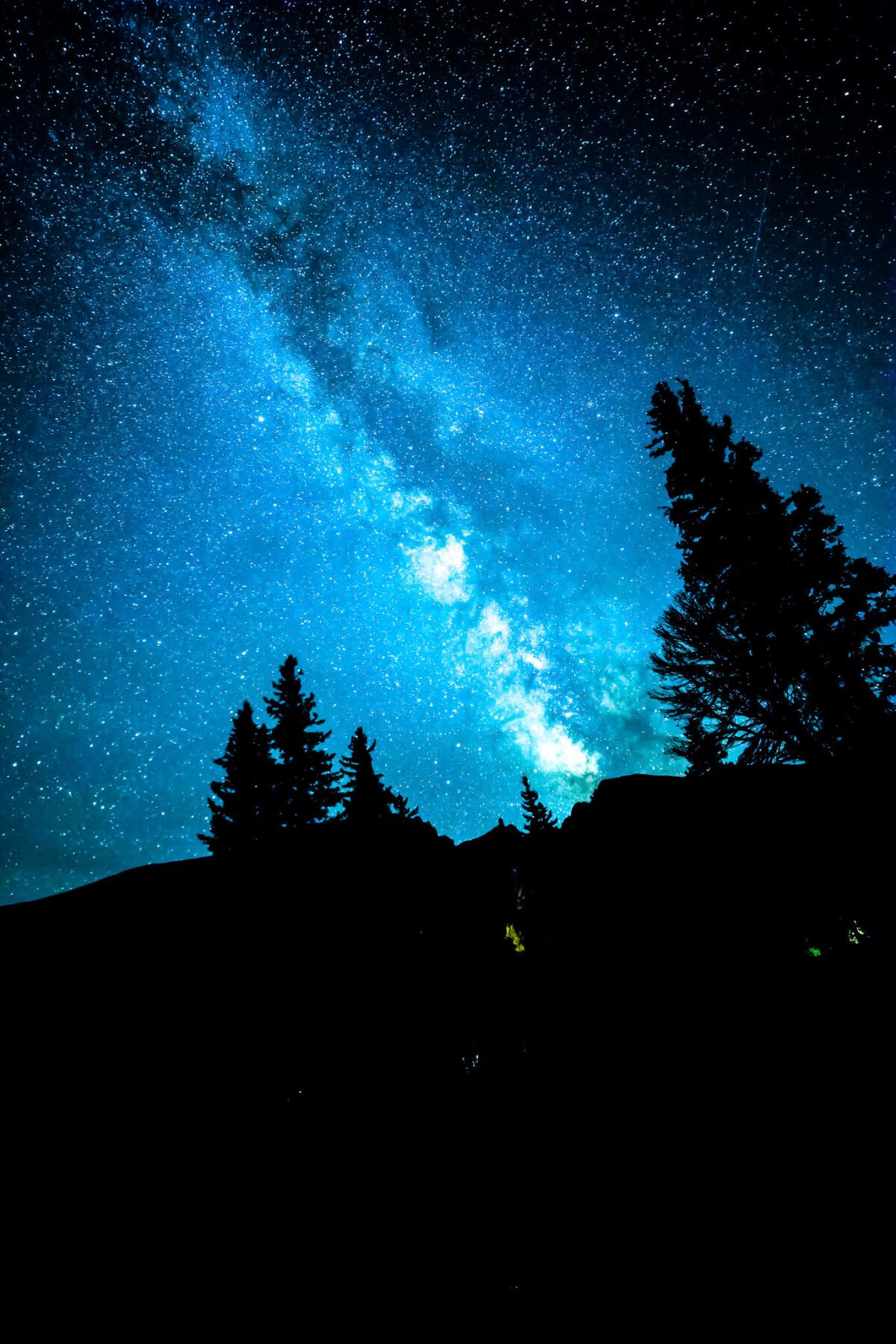
If Las Vegas is the brightest spot on Earth, its dark alter ego lies about 300 miles northeast near the tiny town of Baker, Nev. The remote, dry expanse offers plenty of darkness, which is why it was designated an International Dark Sky Park in 2016. “Great Basin [National Park] is a place where the Milky Way seems so clear at 10,000 feet that … even without being [very dark] its view is stunning,” Tyler Nordgren, astronomer and physics professor at the University of Redlands, said in an email. On clear nights when the moon isn’t shining, expect to see planets, constellations, meteors and, of course, man-made satellites. To witness the darkest of night skies firsthand, drive to Mather Overlook at 9,000 feet and look up.
Info: Great Basin National Park, (775) 234-7331
Death Valley National Park, California and Nevada
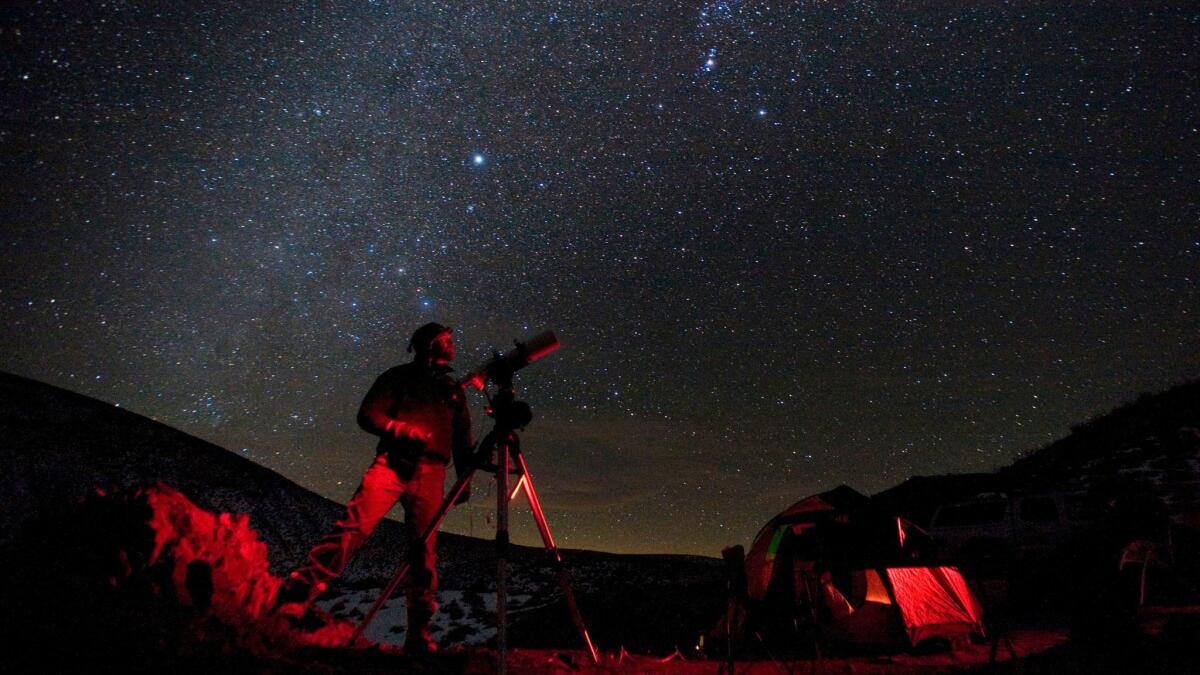
The 5,270-square-mile park in California and a snippet of Nevada is the largest International Dark Sky Park in the world. Death Valley is far enough from big cities that it offers what experts describe as "near-primitive" views of the night sky. Eureka Dunes and the eerily empty Racetrack make for interesting places to view stars on moonless nights. Nordgren favors the low-elevation salt flats in Badwater Basin. “There are no trees or grasses and so there are no birds or insects,” he wrote. “The silence is therefore deafening. With the lack of artificial light, the stars overhead stretch from horizon to horizon, and it becomes a place of multi-sensory awe.” The park hosts star parties in winter as does the Oasis at Death Valley (formerly Furnace Creek Resort).
Info: Death Valley National Park, (760) 786-3200
Waitomo Caves, New Zealand
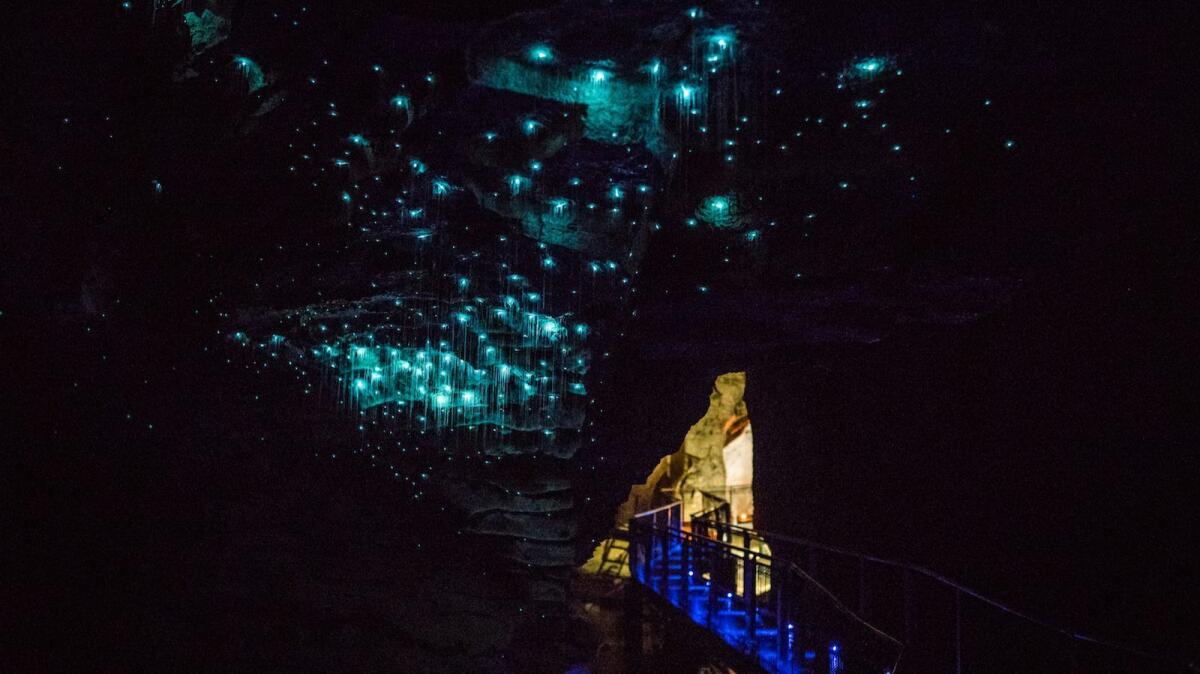
Most caves and caverns open to tourists are well lighted and have a well-trod path, but not the Waitomo Caves — and for good reason. The New Zealand attraction, about 120 miles south of Auckland, always keeps visitors in the dark. The reason? Glowworms, thousands of luminescent creatures that cling to the cave’s walls and ceilings. The glow worms create a starry sky of living LED-like lights inside the cave discovered by a Maori chief in the late 19th century. Today his descendants take visitors on boat tours into what's called the Glowworm Grotto to see the Arachnocampa luminosa found nowhere else in the world. Adventurers can choose to go black-water rafting, that is, hopping on an inner tube and floating through the dark subterranean caverns.
Info: Waitomo Caves, www.waitomo.com/#undefined
Barrow, Alaska
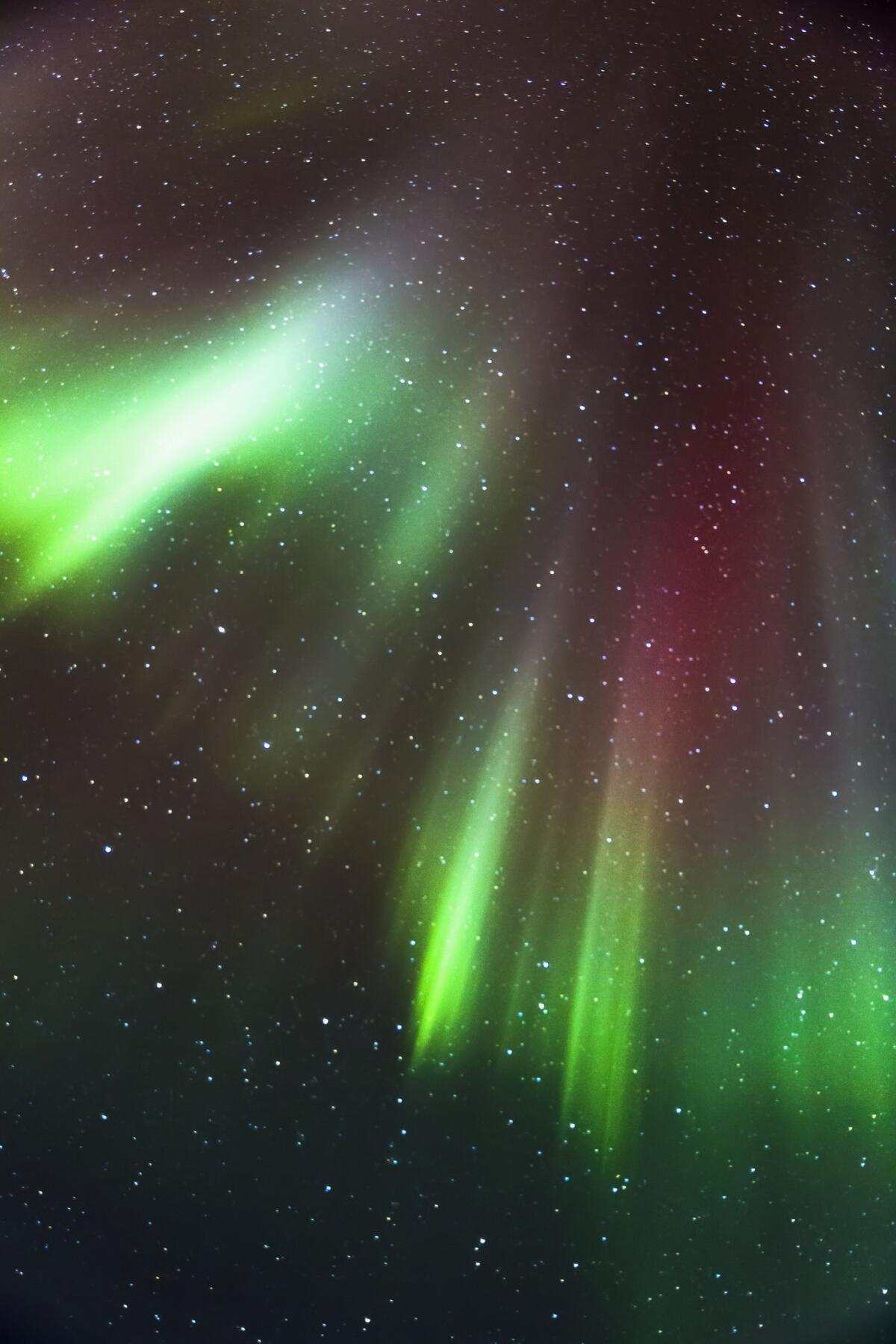
Polar night is defined as night lasting more than 24 hours. In Barrow, that night lasts a long time in winter. The town, about 330 miles north of the Arctic Circle, experiences as many as 67 sunless days in wintertime. That means when the sun sets on Nov. 18, it won’t rise again until Jan. 22. The 4,000 people who live in Barrow become enveloped in constant twilight rather than the black of night. If you visit during the dark days, expect to have a front-row seat to watch the stars and the swirling, seasonal northern lights. To learn how the locals adapt to harsh, dark months, check out the town's Inupiat Heritage Center.
Info: TravelAlaska.com
Tromso, Norway
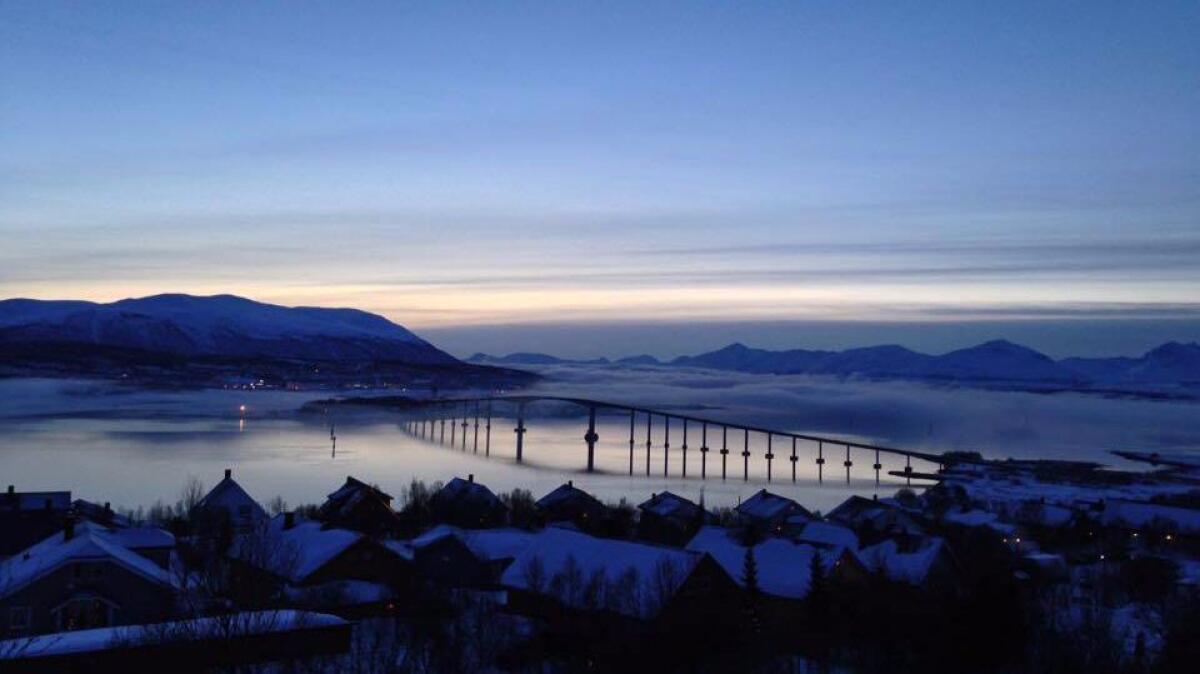
Tromso, above the Arctic Circle, experiences polar darkness about 60 days starting in late November, the flip side of the long summer’s midnight sun. The town sits on a coastal island about the size of Manhattan, surrounded by mountains and fiords. It's inside the northern lights oval, an area with the highest probability of seeing the aurora borealis. "It is a dark season, but at the same time … [t]he sky has amazing light shows," wrote Lone Helle, Visit Tromso's marketing manager, said in an email. “You know the red/pink/orange light after the sunset? Just like that. And of course you have queen Aurora ruling the sky." Other things to do include lacing up your running shoes for the Polar Night Half Marathon on Jan. 6 or going reindeer sledding with the local Sami people.
Info: Visit Tromso
Mosquito Bay, Vieques, Puerto Rico
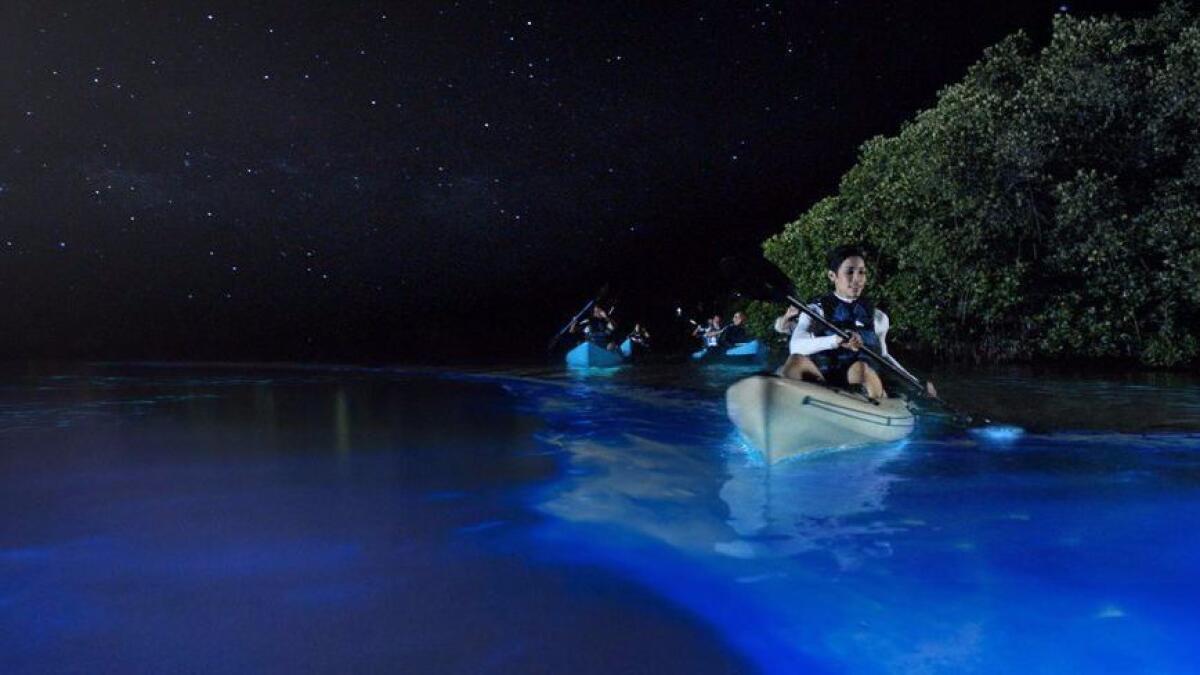
You don’t have to go halfway around the world to find good dark spaces, says Paul Bogard, who wrote “The End of Night: Searching for Natural Darkness in an Age of Artificial Light.” Heading out to sea, for example, far from man-made lights, will suffice. In the waters off Puerto Rico's Vieques Island, visitors can witness a starry sky above and a greenish-blue glow on the water below. Mosquito, or Bio, Bay is the brightest bioluminescent place on the planet, with thousands of microscopic organisms lighting the way. You can thank the Pryodinium bahamense for the watery light show, best seen if you paddle a kayak on a moonless night. You can take a pontoon boat tour too, but swimming in the bay is forbidden.
Info: Vieques.com, (800) 866-7827
Sign up for The Wild
We’ll help you find the best places to hike, bike and run, as well as the perfect silent spots for meditation and yoga.
You may occasionally receive promotional content from the Los Angeles Times.




